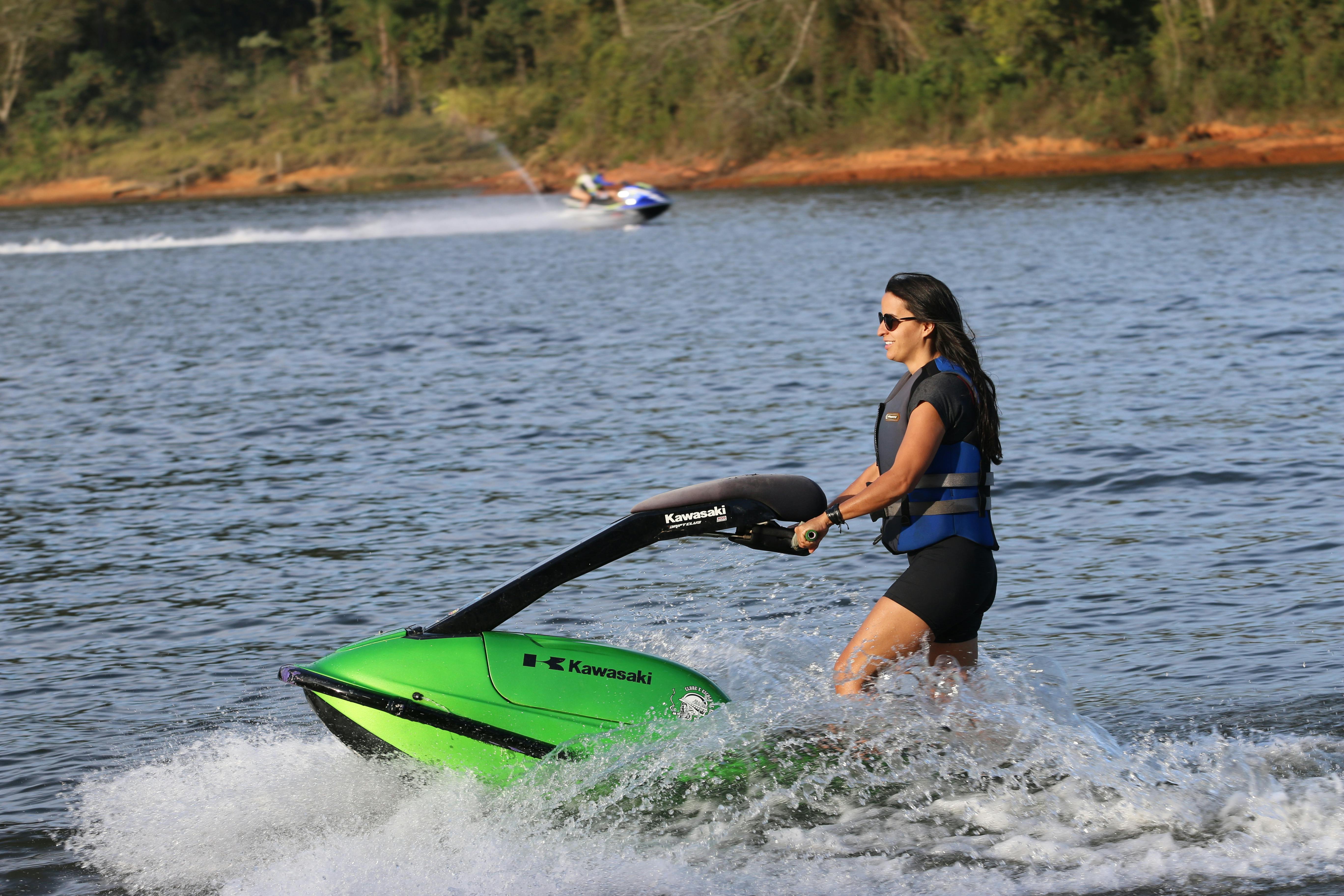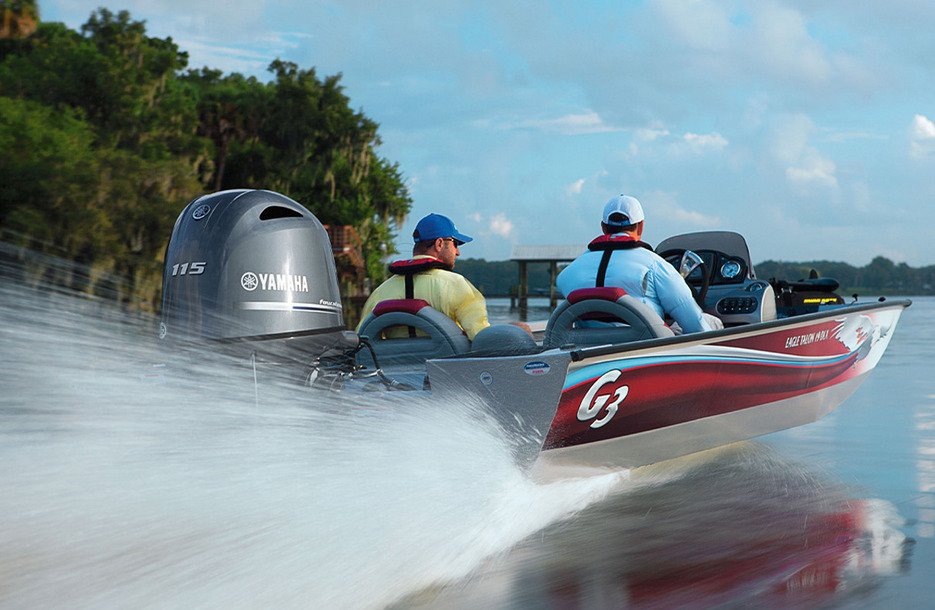How Jet Skis Work: An In-Depth Guide

Image Source: Pexels
Jet Skis, also known as Personal Watercraft (PWC), are thrilling recreational vehicles that allow you to glide across the water’s surface with speed and agility. If you’ve ever wondered how these machines work, you’ve come to the right place. In this comprehensive guide, we’ll explore the fascinating mechanics behind jet skis, their history, various uses, and their connection to water sports. So, let’s dive in and uncover the inner workings of these adrenaline-pumping watercraft.
A Brief History of Jet Skis
Before delving into the intricacies of how jet skis work, let’s take a moment to appreciate their origins. The concept of personal watercraft can be traced back to the 1950s when models like the Vincent Amanda from the United Kingdom and the German Wave Roller dominated the market. However, it wasn’t until 1972 that Kawasaki introduced the first stand-up jet ski under the iconic brand name “Jet Ski.” These compact watercraft, designed to carry a single rider, revolutionized the industry and paved the way for the modern jet ski we know today.
Understanding the Mechanics
To comprehend how jet skis work, we need to explore their engineering marvels. Unlike traditional boats with propellers, jet skis utilize a unique propulsion system that propels them forward with remarkable force. At the heart of this system is the impeller, a motorized fan that pulls water into the craft. Let’s break down the process step by step:
Water Intake: The jet ski’s engine pulls water from the surrounding area using the impeller. As the impeller spins, it creates a suction effect, drawing water into the craft.
Water Compression: Once inside the jet ski, the water is compressed by the engine’s power. This compression increases the pressure within the craft, preparing it for propulsion.
Water Ejection: When the rider accelerates, the pressurized water is forced out of a nozzle located at the rear end of the jet ski. This powerful jet of water propels the craft forward, allowing it to reach impressive speeds.
Steering Control: To control the direction of the jet ski, the rider can adjust the angle of the nozzle using the handlebars. This maneuverability allows for precise navigation on the water.
The Versatile Uses of Jet Skis
Jet skis are not just thrilling recreational vehicles; they also serve a range of practical purposes. Let’s explore some of the most common uses for jet skis:
1. Lifesaving and Rescue Operations
Jet skis play a crucial role in lifeguard stations and rescue operations. Their speed and maneuverability make them invaluable for reaching swimmers or boats in distress quickly. Lifeguards and rescue teams rely on jet skis to swiftly respond to emergencies and provide aid in challenging water conditions. Additionally, during floods or natural disasters, jet skis are used to rescue stranded individuals or transport supplies to affected areas.
2. Fishing Adventures
Jet ski fishing has gained immense popularity in recent years, attracting anglers who prefer a more exhilarating fishing experience. With their agility and ability to navigate shallow waters, jet skis provide easy access to prime fishing spots that traditional boats may struggle to reach. Anglers enjoy the thrill of reeling in their catch while enjoying the freedom and mobility that jet skis offer.
3. Law Enforcement and Security
Jet skis have become indispensable tools for law enforcement agencies worldwide. Organizations such as the Navy and Coast Guard utilize jet skis for a variety of activities, including coastal patrol, surveillance, and interdiction operations. The compact size and speed of jet skis enable law enforcement officers to swiftly navigate through crowded waterways and perform their duties effectively.
Thriving in the World of Water Sports
Jet skis have also carved a niche for themselves in the world of water sports. Racing events, both amateur and professional, are held annually, attracting thrill-seekers and adrenaline junkies from around the globe. Let’s explore some of the popular water sports associated with jet skis:
1. Closed Circuit Races
Closed circuit races are one of the most common forms of jet ski racing. Competitors race around a defined course, showcasing their skills and speed. These races often feature various categories based on the jet ski’s modifications, such as stock races for unmodified PWCs and limited races for highly modified machines.
2. Speed Races
Speed races push the limits of jet ski performance, challenging riders to achieve the highest speeds possible within a given distance. These races are a thrilling spectacle, with competitors aiming to break speed records and showcase the power of their machines.
3. Endurance Events
Endurance events test both the rider’s stamina and the durability of their jet ski. Participants compete over long distances, enduring the physical demands of extended periods on the water. These events showcase the reliability and endurance of jet skis, as riders navigate through challenging conditions to reach the finish line.
4. Freestyle Events
Freestyle events allow riders to showcase their creativity and skill by performing daring tricks, flips, and aerial maneuvers on their jet skis. These gravity-defying performances demonstrate the agility and versatility of these watercraft, captivating audiences with their awe-inspiring displays.
Safety First: Riding Responsibly
While jet skis offer an exhilarating experience, it’s essential to prioritize safety and responsible riding. Here are some key safety tips to keep in mind when operating a jet ski:
Obtain Proper Training: Before venturing out on a jet ski, it’s crucial to receive proper training and instruction. Many local waterfronts and beaches offer jet ski lessons that teach you the basics of riding and safety procedures.
Wear Protective Gear: Always wear a personal flotation device (PFD) or life jacket when riding a jet ski. Additionally, it’s recommended to wear protective gear such as a wetsuit, helmet, and goggles to safeguard yourself from potential injuries.
Know Your Surroundings: Be aware of your surroundings at all times and avoid crowded areas or swimming zones. Watch out for other watercraft, swimmers, and obstacles to prevent collisions and ensure the safety of those around you.
Avoid Alcohol and Drugs: Never operate a jet ski while under the influence of alcohol or drugs. Impaired judgment and reduced reaction times can lead to accidents and endanger yourself and others.
In Conclusion
Jet skis are exhilarating watercraft that combine power, speed, and maneuverability, providing riders with a thrilling on-water experience. Understanding the mechanics behind jet skis, their versatile uses, and their connection to water sports allows you to appreciate the engineering marvels that make these machines possible. Remember, while indulging in the excitement of jet skiing, always prioritize safety and responsible riding. So, grab your life jacket, hop on a jet ski, and embark on an adventure that will leave you with unforgettable memories.







Leave a reply